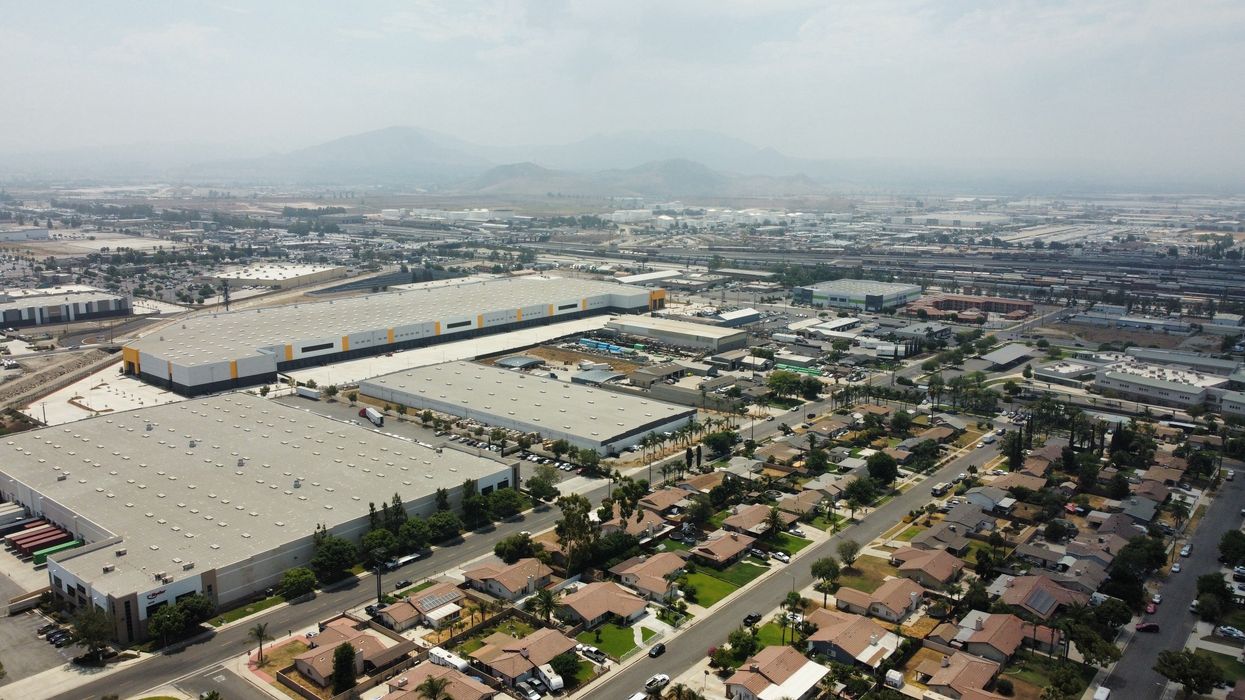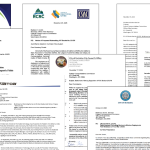
‘Inland Empire Once Again Ranks as Worst in Nation for Air Quality’ read the headline of a 2022 PBS SoCal story.
Two years later, little has changed. Earlier this year, the American Lung Association State of the Air report and a separate study show that the Inland Empire region of Southern California ranks among the top 10 most polluted counties for ozone and annual particulate matter in the U.S.
To read a version of this story in Spanish click here. Haz clic aquí para leer este reportaje en español.
The experts who did the study were surprised that air quality was worse in the Inland Empire than in the neighboring Greater Los Angeles area and linked our poor quality to the mountains around us which, according to them, trapped the polluted air coming from Los Angeles. But for us, their findings are not shocking. From my earliest memories, air pollution has been part of my hometown. Like many other residents, I grew up at the intersection of an airport, railyards, warehouses and freeways spewing out pollution. On top of this chronic pollution, wildfires in the surrounding mountains and hills added a layer of seasonal smoke and danger.
I often only noticed terrible pollution days when the smog blocked my view of the nearby San Bernardino National Forest and Angeles National Forest mountains. Or when massive wildfires covered car hoods in black ash and painted the sky red. The air always smelled and tasted like diesel exhaust, and I saw my friends and family’s difficulty breathing as one of the many daily struggles in the region. Asthma and other respiratory issues were almost expected.
While the pollution in the Inland Empire surprises some people, local environmental justice activists, researchers and members of my predominantly Latino community struggling to breathe, have been fighting for clean air for decades. However, such efforts are slowed by the clash of politics, economics and even the analyses blaming the Inland Empire’s bad air quality on unfortunate geography. Advocates have been forced to argue, over and over again, why their right to breathe clean air is important and are faced with the reality that decision makers tend to undervalue people’s experiences with pollution while prioritizing ‘expert’ data, analysis and voices. As an environmental justice researcher, I believe community science might offer the opportunity to change this power imbalance. It is also an opportunity to reshape how people experiencing pollution are seen in decision-making spaces, helping them become the experts.
Local struggle for clean air
More than one billion square feet of warehouses sprawl across the Inland Empire. Each day, container ships arrive at the ports of Los Angeles and Long Beach, diesel trucks haul the containers around 50 miles east to the Inland Empire warehouse hub, then workers unload, repackage and send out packages via diesel trucks, railyard and airplanes. Along with wind patterns pushing Los Angeles pollution toward the Inland Empire, the hyper transportation to and from the warehouse hub is a major source of air pollution.
More than one billion square feet of warehouses sprawl across the Inland Empire.
Added to this, the mountains and hills creating the “pollution dome” are increasingly burning because of climate change and years of colonial fire management disconnected from Indigenous practices that helped to keep giant fires at bay.

As local transportation emits chronic pollution while smoke from seasonal wildfires gets trapped in our hometowns, we suffocate. “I’d like to describe to you what it is like living in the Inland Empire,” said Bloomington resident Amparo Miramontes in a recent public hearing discussing a proposal to use 213 acres of land for warehousing in that unincorporated town. “[It] means I fear the night because my children struggle to breathe as diesel fuel byproducts rip through their little bodies like shrapnel in war. In the morning the evidence of this was in pools of blood from their noses.”
In fact, physicians and community leaders describe the region as a “diesel death zone” due to the high rates of asthma, respiratory illnesses, cancer and premature deaths linked to pollution.
“Approving warehouse after warehouse without considering the cumulative impacts means that the children of the [Inland Empire] futures have already been sold off to developers,” Miramontes said. In that same meeting, many others denounced the applicant’s data and analysis around pollution burdens that did not match the experience of people living in a toxic environment.
Yet on the same day, the San Bernardino County Commission unanimously voted to approve the warehouse, citing employment opportunities and the boost to the local economy (two issues that residents often contest because of precarious labor linked to warehouse work and the lack of funding reaching the local communities).
This is only one of the many cases locally and beyond when environmental decision-makers overlook people’s experiences. Environmental decision-makers are more often influenced by quantitative data and communication skills that convey expertise over pollution burdens, even though people living in pollution have been key to detecting hazards in their environments.
Community experience and science
I first noticed the ways in which environmental decision-makers undervalue people’s experiences after learning about environmental justice during my undergraduate studies at San Bernardino Valley College and California State Polytechnic University, Pomona. I realized that pollution in our region was not just a consequence of urban landscapes, but the product of systemic injustices. Low-income communities of color like mine are overburdened with pollution across the country. It became clearer that so many warehouses were being built in my community because people lack the time, financial resources and authority to fight back – a reality built on decades of unjust environmental politics.
For my doctoral degree, I’m looking into the historical decisions that have created these uneven exposures. Unjust environmental decisions like the 2006-2009 Port of Los Angeles Commission push to expand the coastal port and logistics infrastructure despite knowing that their current operations already led to high cancer rates in the South Coast Air Basin. As researcher Juan De Lara explains, the president convinced policymakers that the very same thing that was killing people could eventually solve the issue in the future at the momentary expense of Black and Latino lives.
I want my communities’ experiences to hold more weight in environmental decision-making spaces. That’s why I am developing a project in which people will carry portable pollution monitoring devices. On-site monitors are great for getting an idea of regional air quality, but they do not account for buildings, houses and the new warehouses impacting how pollution moves around the region or how people navigate these spaces during their daily lives. While portable air monitoring technology cannot compete with government monitors’ data quality, it can help track how much and where people are exposed to pollution during their daily activities.
I want my communities’ experiences to hold more weight in environmental decision-making spaces.
For too long, data collection, knowledge production and scientific authority have been controlled by people outside of environmental justice communities. Equipping local citizen scientists with the tools to do their own research can help democratize what we understand as evidence and help residents communicate their lived experiences in a way that environmental decision-makers must value.
This essay was produced through the Agents of Change in Environmental Justice fellowship, a partnership between Environmental Health News and Columbia University’s Mailman School of Public Health. Agents of Change empowers emerging leaders from historically excluded backgrounds in science and academia to reimagine solutions for a just and healthy planet.





